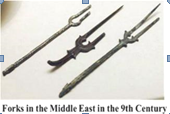0 136008 136016 136022 136026 136032 136034 136038 136044 136046 136052 136058 136062 136064 136068 136074 136076 136082 136086 136088 136092 136094 136098 136100 136102 136103 136104 136106 136107 136108 136110 136112 136116 136118 136122 136124 136128 136134 136136 136142 136146 136148 136152 136158 136164 136166 136172 136176 136178 136184 136188 136194 136202 159627

 B.
B. C.
C.